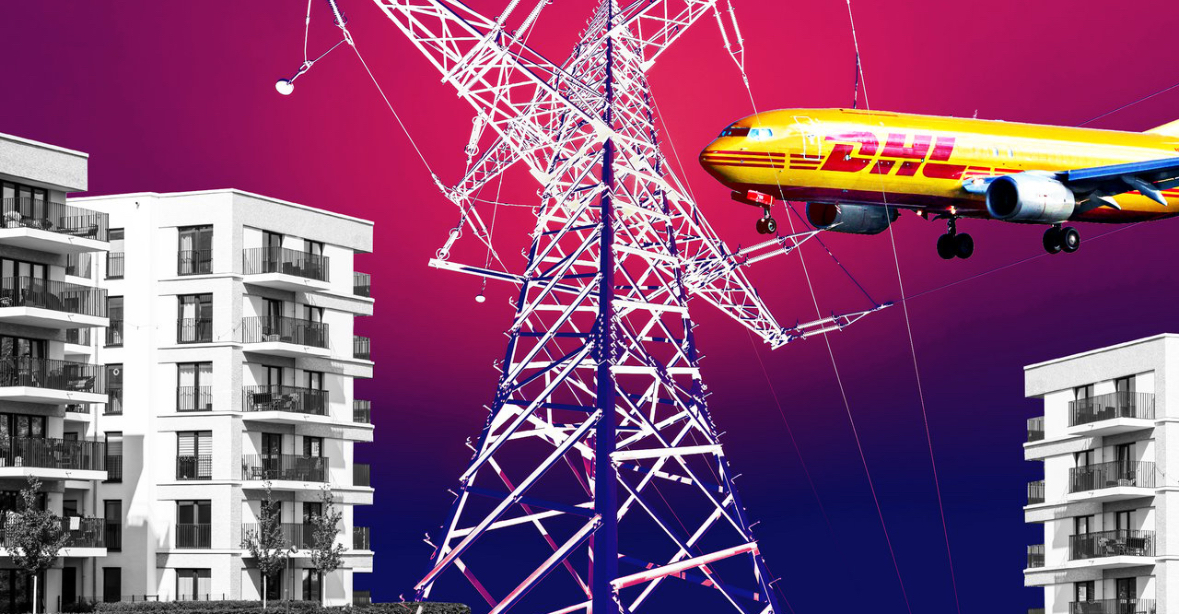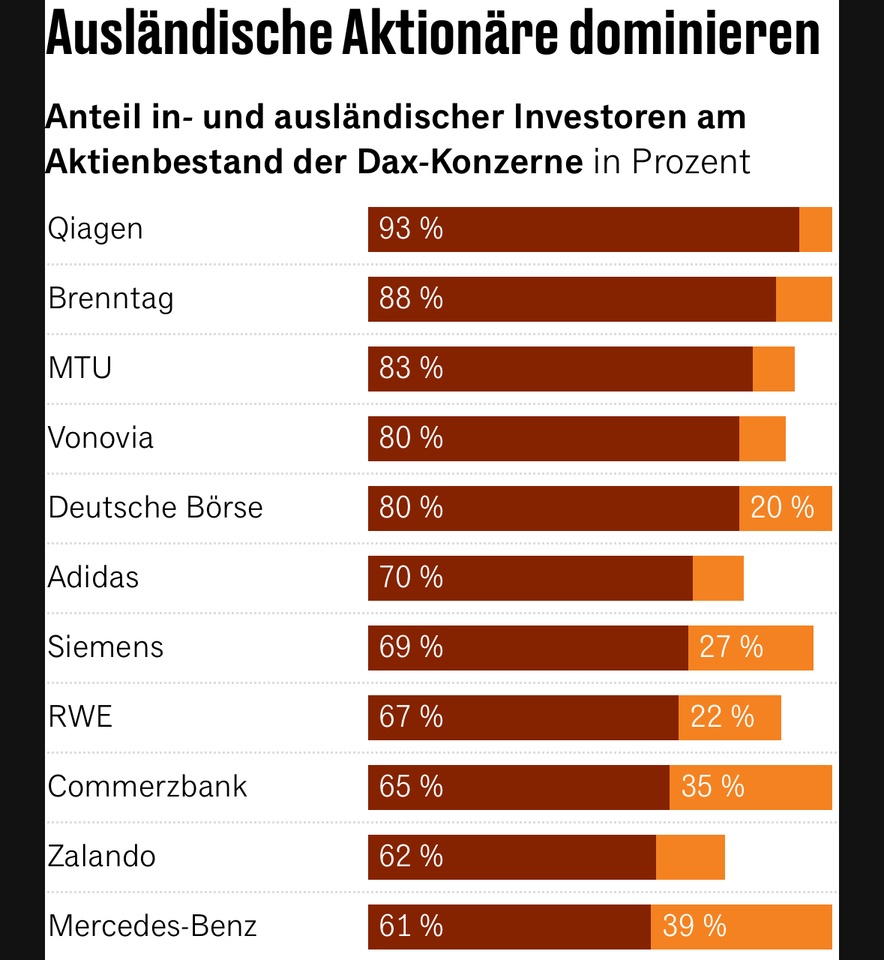With the current price/earnings ratio (P/E ratio), the DAX is overvalued by 25 percent compared to its 20-year average.
However, five of the 40 shares are valued more than 30 percent lower than their long-term average. The valuation discount is 51 percent for one share and as much as 73 percent for one share.
Handelsblatt presents these 5 stocks, the following is an excerpt from the article.
Vonovia $VNA (-0,18 %) : 33 percent valuation discount
Germany's largest housing group is growing again. In the past two years, Vonovia had not started any new construction projects due to the turnaround in interest rates and increased construction costs. Now 3000 new apartments are to be built and unrenovated properties purchased and renovated.
Analysts expect an average net profit of 2.15 billion euros for the year as a whole. The trend is pointing upwards: Six weeks ago it was just over two billion euros, twelve weeks ago it was 1.9 billion euros. Vonovia is forecasting the highest operating result in its history for 2026.
With a P/E ratio of 12.2 based on the profits expected by analysts over the next four quarters, the share is moderately valued and 33 percent lower than the long-term average.
VW $VOW (+1,13 %): 35 percent valuation discount
VW was in the red in the third quarter. After a profit of 1.56 billion euros in the same period of the previous year, the Group posted a billion-euro loss.
This was caused by charges of 7.5 billion euros, primarily due to increased customs duties, the adjustment of the product strategy at Porsche $P911 (+2,39 %) and write-downs on Porsche's goodwill.
By contrast, the long-weakening core brand Volkswagen improved. A comprehensive cost-cutting program also had an impact.
For the current full year, analysts are forecasting an average net profit of 6.5 billion euros after 11.35 billion euros last year. The trend is pointing steeply downwards, as three months ago the estimate was just under nine billion euros.
Taking this sharply lowered profit forecast into account, VW is nevertheless valued extremely low with a P/E ratio of just 4.4. This is a discount of 35 percent compared to the Group's own average. No other DAX stock is cheaper - with the exception of Porsche Holding, which belongs to VW.
FMC $FME (+0,24 %)
: 41 percent valuation discount
No company in the DAX is as dependent on the US market as the dialysis specialist Fresenius Medical Care (FMC). FMC generates around 70 percent of its sales in North America.
However, business on the most important continent for the healthcare specialist is - slightly - under pressure. The treatment figures of the blood purification specialist are merely stagnating.
In the third quarter, however, total sales rose by ten percent to 4.9 billion euros compared to the same period last year, exceeding market expectations by three percent. Currency-adjusted earnings before interest and taxes rose by 28 percent to 574 million euros. This also exceeded the company's expectations.
The rising profits at a share price that has only stagnated for six months mean that the valuation has fallen sharply. With a P/E ratio of 10.1 based on the profits forecast by analysts for the next four quarters, the share is valued 41% lower than the 20-year average.
Bayer $BAYN (-0,58 %) : 51 percent valuation discount
With a P/E ratio of only 5.6 based on the average net profits expected by analysts over the next four quarters, Bayer shares are valued lower than all other major pharmaceutical stocks in the western world. Compared to its own 20-year average, the discount is 51 percent.
The biggest construction site for the Group is a bad decision made ten years ago: the purchase of the controversial US seed and pesticide manufacturer Monsanto. Its weedkiller glyphosate is blamed by patients for their cancer and they are demanding billions in compensation.
The favorable valuation is based on the hope that profit expectations will be fulfilled and that no new write-downs in the billions will be made. However, this is just as uncertain as an end to the lawsuits. Success with new blockbusters in the pharmaceutical division is also by no means a foregone conclusion.
Zalando $ZAL (+0,76 %)
: 73 percent valuation discount
Anyone buying this DAX stock is paying a P/E ratio of 15.4, which is not cheap compared to the DAX, but the share is valued 73 percent lower than its own long-term average.
The share is currently trading more than 70 percent below its record high, although the company is expected to earn more in the current financial year than ever before. After a net profit of 251 million euros in the previous year, analysts are forecasting a good 290 million euros for the current year.
Source text (excerpt) & graphic: Handelsblatt, 07.11.2025
















